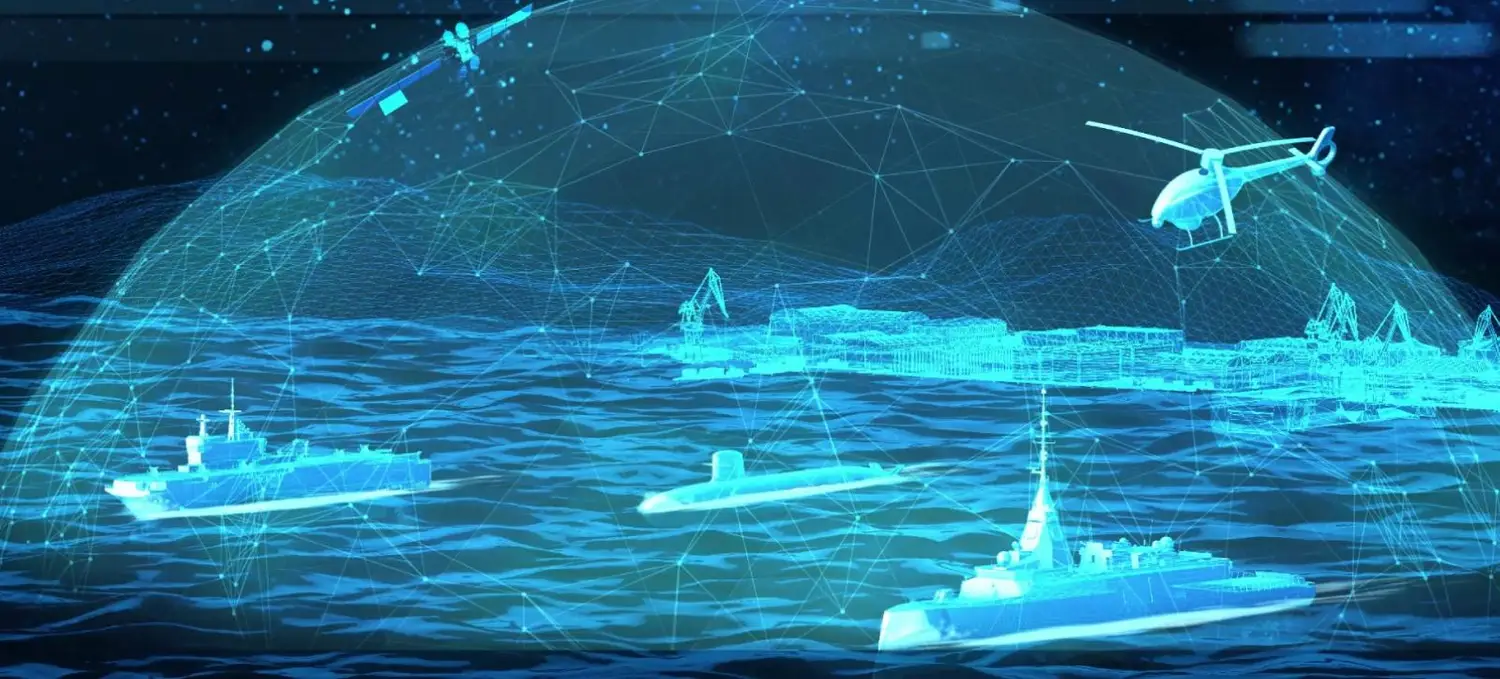
REPORT HOME > Conclusion
MAY 2023 | technology report | NAVAL ENGINEERING
While digital technologies have the power to revolutionise vessel design and sustainment, there are a number of complex background factors that must be tackled to ensure success.
Above: The more data is used in ship design and maintenance, the greater the need to protect it using robust cybersecurity countermeasures. (Image: Naval Group)
The benefits added by digital technologies to the whole lifecycle of surface ships and submarines, from design and production all the way through to routine maintenance, are significant.
They not only contribute to considerably reducing costs – be that in terms of materials, optimisation of processes or training of personnel – but they also represent a key enabler for innovation.
Expleo’s VP Marine Jonathan Taylor was clear that ‘we must not forget that people are a key part of the transformation and must be considered central to the strategy to embrace digital technology. As well as attracting the new skills into the Naval Enterprise, we must invest in developing our existing teams to keep pace with the opportunity that digital technology brings.’
And this is just the beginning, as these technologies continue evolving and, just as importantly, will become ubiquitous to the next generation of engineers. BAE Systems’ experts noted: ‘These “digital natives” bring with them the expectation around the use of technology and data [and] this transition cannot be underestimated – think transition from sail to steam!’
Yet even the technologies that help the industry address a number of key challenges present their own implementation issues. Chief among those, as with all industries that depend heavily on datasets and data transfer, the naval sector will have to contend with issues of cybersecurity and data management.
As Naval Group’s spokesperson explained: ‘Before implementing a digital solution, a complete analysis of potential risks and an evaluation of the countermeasures to be put in place is absolutely necessary.’
Similarly, as many different actors in the value chain gain access to data sets, data management will play a significant role in the successful implementation of digital solutions.
This also includes intellectual property issues, as Moya pointed out, ‘to prevent unauthorised use [of the data sets]’. Such issues were also raised by Debenedetti, who added that, for example, a different business model should be implemented where industry and an MoD are part of the same environment.
Additionally, ‘appropriate legal and contractual models should be put in place for treating these aspects’, he explained.
Ultimately, as new technologies such as cloud computing, AI and quantum computing enter the realm of ship design, build and maintenance, one of the key challenges will be organisational culture transformation to enable digitalisation.
Because as Debenedetti told Shephard, if digitalisation is not ubiquitous to an organisation, or if training does not sufficiently address skills gaps, the whole process might be hampered. ‘If you no longer feel that the digital environment will help you, why lose time understanding and using it?’ he pointed out.
